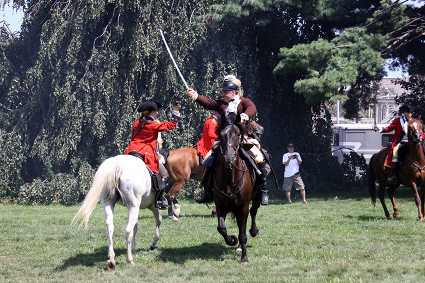Green-Wood recalls Revolutionary War’s Battle of Brooklyn

7873374110_0db4f51fa0_o.jpg
Hundreds of New Yorkers gathered at Green-Wood Cemetery on Sunday as the Green-Wood Historic Fund commemorated the 236th anniversary of the Battle of Brooklyn with a day-long series of events.
Fought in August 1776 on land that is now a part of Green-Wood and nearby Prospect Park, the battle was the first battle of the American Revolution to be waged after the signing of the Declaration of Independence.
On August 27, 1776, 2,000 brave American soldiers held back a British force though they were outnumbered three to one. The Battle of Brooklyn (sometimes called the Battle of Long Island) is significant because there were more soldiers present than at any other battle during the American Revolution.